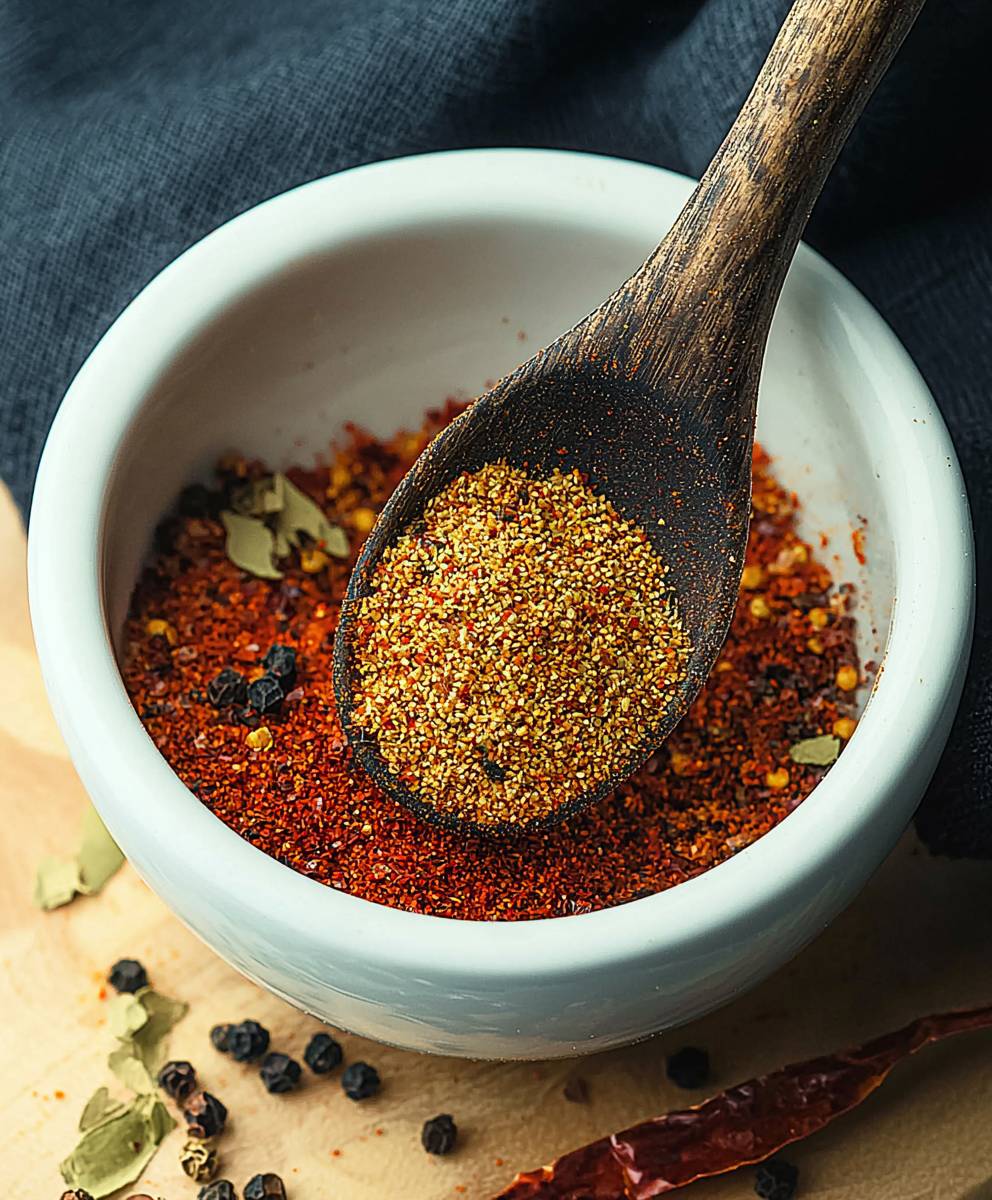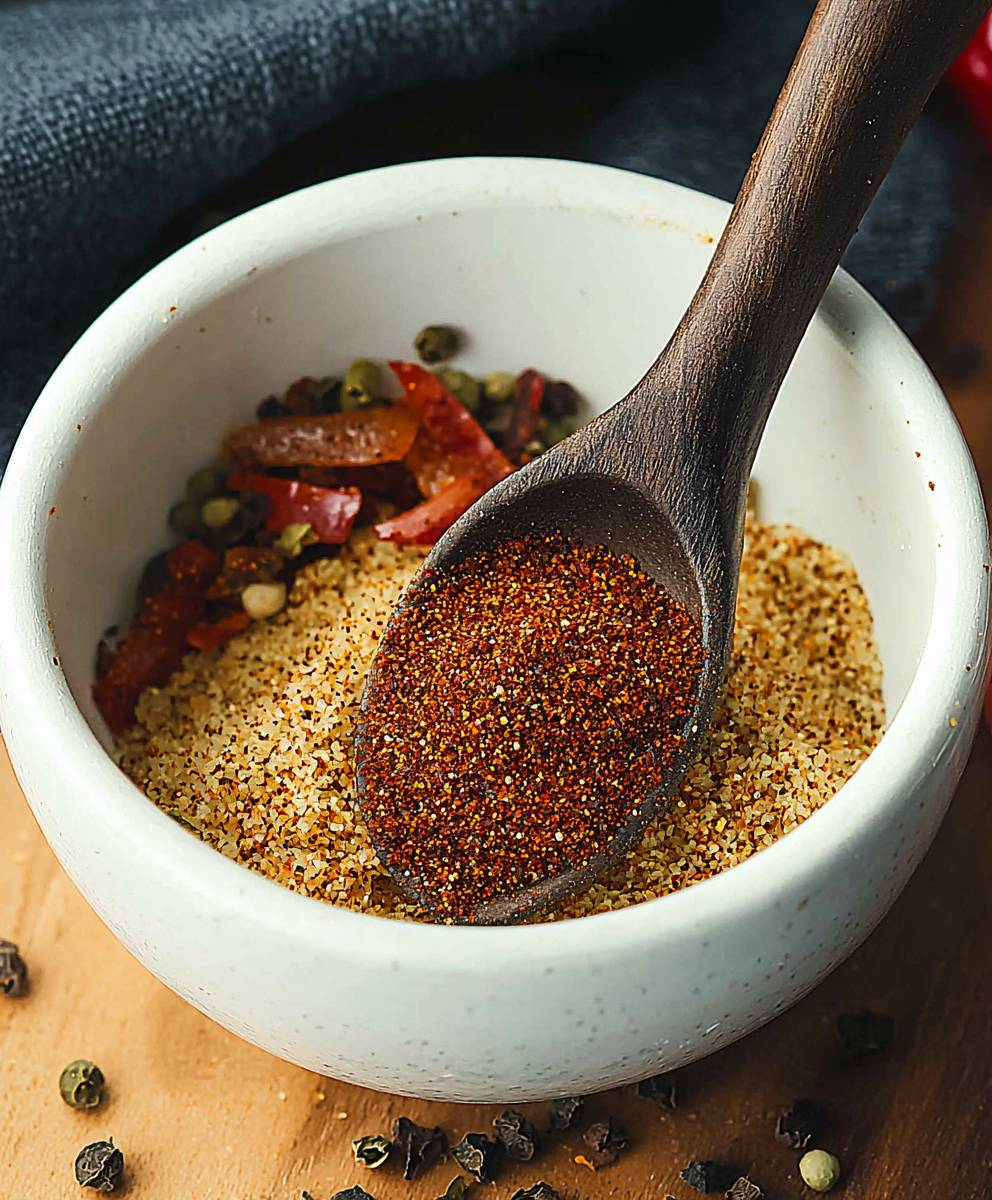Homemade Fajita Seasoning: the secret weapon to unlocking restaurant-quality fajitas in the comfort of your own kitchen! Forget those pre-packaged mixes loaded with sodium and questionable ingredients. I’m going to show you how incredibly easy it is to create a vibrant, flavorful blend that will transform your next Tex-Mex night.
Fajitas, originating in the Rio Grande Valley of Texas, were traditionally made with skirt steak grilled over an open fire. The term “faja” refers to the cut of beef, and the dish evolved from resourceful cowboys utilizing less desirable cuts of meat. While the preparation has become more refined over the years, the essence remains: tender, flavorful meat served with sizzling peppers and onions, all wrapped in warm tortillas.
What makes fajitas so universally loved? It’s the symphony of flavors and textures! The smoky char of the meat, the sweetness of the caramelized vegetables, and the satisfying warmth of a freshly made tortilla. And, of course, the convenience! Fajitas are quick to prepare, making them perfect for busy weeknights or casual gatherings. But the real magic lies in the seasoning. That’s why mastering homemade fajita seasoning is a game-changer. It allows you to control the spice level, tailor the flavors to your liking, and ensure that every bite is bursting with authentic Tex-Mex goodness. So, ditch the store-bought stuff and let’s get started!
Ingredients:
- 4 tablespoons chili powder
- 2 tablespoons ground cumin
- 1 tablespoon smoked paprika
- 1 tablespoon garlic powder
- 1 tablespoon onion powder
- 1 tablespoon dried oregano
- 1 teaspoon cayenne pepper (adjust to your spice preference)
- 1 teaspoon salt
- 1 teaspoon black pepper
- 1 teaspoon cornstarch (optional, for thickening sauces)
Instructions:
- Combine the Spices: In a medium-sized bowl, add all the spices: chili powder, ground cumin, smoked paprika, garlic powder, onion powder, dried oregano, cayenne pepper, salt, black pepper, and cornstarch (if using).
- Mix Thoroughly: Use a whisk or a spoon to mix all the spices together until they are evenly distributed. Make sure there are no clumps of any single spice. This ensures a consistent flavor throughout your fajitas.
- Taste and Adjust (Optional): Take a small pinch of the seasoning and taste it. This is your chance to adjust the flavors to your liking. If you want it spicier, add a pinch more cayenne pepper. If you prefer a more earthy flavor, add a bit more cumin. If you like a smoky flavor, add a little more smoked paprika. Remember to add small amounts at a time and taste after each addition.
- Store Properly: Transfer the fajita seasoning to an airtight container. A glass jar or a plastic container with a tight-fitting lid works best. Store it in a cool, dark, and dry place, such as your pantry or spice cabinet. This will help to preserve the flavor and prevent the spices from clumping together.
- Label and Date: Label the container with the name “Homemade Fajita Seasoning” and the date you made it. This will help you keep track of how long it has been stored. Homemade spice blends are best used within 6-12 months for optimal flavor.
Using Your Homemade Fajita Seasoning:
- Prepare Your Protein and Vegetables: Slice your choice of protein (chicken, beef, shrimp, or tofu) into thin strips. Slice your vegetables (onions, bell peppers, and any other vegetables you like) into strips as well.
- Season the Protein and Vegetables: In a large bowl, toss the sliced protein and vegetables with 2-3 tablespoons of olive oil (or your preferred cooking oil). Then, sprinkle generously with your homemade fajita seasoning. Start with about 2-3 tablespoons and add more to taste. Make sure the protein and vegetables are evenly coated with the seasoning.
- Marinate (Optional): For the best flavor, allow the seasoned protein and vegetables to marinate for at least 30 minutes, or up to a few hours, in the refrigerator. This will allow the flavors to meld together and the protein to become more tender.
- Cook the Fajitas: Heat a large skillet or cast-iron pan over medium-high heat. Add the seasoned protein and vegetables to the hot pan and cook, stirring occasionally, until the protein is cooked through and the vegetables are tender-crisp. This usually takes about 8-12 minutes, depending on the thickness of the protein and vegetables.
- Serve and Enjoy: Serve the cooked fajitas immediately with warm tortillas, your favorite toppings (such as salsa, guacamole, sour cream, cheese, and cilantro), and a squeeze of lime juice.
Tips and Variations:
- Adjust the Spice Level: If you’re sensitive to spice, reduce or omit the cayenne pepper. If you like it extra spicy, add more cayenne pepper or a pinch of red pepper flakes.
- Add Smoked Salt: For an extra smoky flavor, try adding a teaspoon of smoked salt to the seasoning blend.
- Use Fresh Herbs: If you have fresh oregano on hand, you can use it instead of dried oregano. Use about 1 tablespoon of chopped fresh oregano for every 1 teaspoon of dried oregano.
- Make a Large Batch: This recipe can easily be doubled or tripled to make a larger batch of fajita seasoning. Just make sure to store it properly in an airtight container.
- Cornstarch Alternative: If you don’t have cornstarch, you can use arrowroot powder or tapioca starch as a substitute. The cornstarch helps to thicken any sauces that form during cooking, but it’s not essential.
- Experiment with Other Spices: Feel free to experiment with other spices to create your own unique fajita seasoning blend. Some other spices you might want to try include chipotle powder, ancho chili powder, or cumin seeds.
- For Vegetarian Fajitas: Use the seasoning on portobello mushrooms, black beans, or other vegetarian protein sources.
- Low Sodium Option: Reduce or eliminate the salt in the recipe for a low-sodium version. You can also use a salt substitute.
Detailed Explanation of Ingredients:
- Chili Powder: This is the base of the fajita seasoning and provides a mild, slightly sweet, and earthy flavor. It’s a blend of ground dried chili peppers and other spices.
- Ground Cumin: Cumin adds a warm, earthy, and slightly bitter flavor that is characteristic of many Mexican and Southwestern dishes.
- Smoked Paprika: Smoked paprika adds a smoky and slightly sweet flavor that enhances the overall taste of the fajitas. It’s made from peppers that have been smoked over oak or other wood.
- Garlic Powder: Garlic powder provides a pungent and savory flavor that complements the other spices in the blend.
- Onion Powder: Onion powder adds a subtle onion flavor that enhances the overall taste of the fajitas.
- Dried Oregano: Oregano adds a slightly bitter and herbaceous flavor that is commonly used in Mexican and Italian cuisine.
- Cayenne Pepper: Cayenne pepper adds heat and spice to the fajita seasoning. Adjust the amount to your preference.
- Salt: Salt enhances the flavors of all the other spices and helps to balance the overall taste of the fajitas.
- Black Pepper: Black pepper adds a subtle peppery flavor that complements the other spices in the blend.
- Cornstarch: Cornstarch is optional, but it helps to thicken any sauces that form during cooking. This is especially helpful if you’re using juicy vegetables like bell peppers.
Why Make Your Own Fajita Seasoning?
Making your own fajita seasoning is not only easy, but it also allows you to control the ingredients and customize the flavor to your liking. Store-bought fajita seasoning often contains additives, preservatives, and excessive amounts of salt. By making your own, you can avoid these unwanted ingredients and create a healthier and more flavorful seasoning blend.
Plus, it’s a great way to use up spices that you already have in your pantry. You can also adjust the spice level to suit your taste, making it perfect for both mild and spicy food lovers.
Serving Suggestions:
- Classic Fajitas: Serve the cooked fajitas with warm tortillas, salsa, guacamole, sour cream, cheese, and cilantro.
- Fajita Bowls: Create a fajita bowl by layering rice, black beans, cooked fajitas, and your favorite toppings in a bowl.
- Fajita Salad: Top a bed of lettuce with cooked fajitas, salsa, guacamole, and a drizzle of your favorite dressing.
- Fajita Quesadillas: Fill tortillas with cheese and cooked fajitas, then grill or pan-fry until the cheese is melted and the tortillas are golden brown.
- Fajita Nachos: Top tortilla chips with cheese, cooked fajitas, and your favorite toppings, then bake until the cheese is melted and bubbly.
Storage Tips:
Proper storage is essential for maintaining the flavor and quality of your homemade fajita seasoning. Here are some tips:
- Airtight Container: Store the seasoning in an airtight container to prevent moisture and air from getting in.
- Cool, Dark, and Dry Place: Store the container in a cool, dark, and dry place, such as your pantry or spice cabinet.
- Avoid Direct Sunlight: Avoid storing the seasoning in direct sunlight, as this can cause the spices to lose their flavor.
- Use Within 6-12 Months: For optimal flavor, use the seasoning within 6-12 months.
Troubleshooting:
- Seasoning is Clumpy: If the seasoning becomes clumpy, it’s likely due to moisture. Try adding a few grains of rice to the container to absorb excess moisture. You can also break up the clumps with a fork or whisk.
-

Conclusion:
This Homemade Fajita Seasoning is more than just a recipe; it’s your passport to flavor town! Seriously, ditch the store-bought packets filled with questionable ingredients and embrace the vibrant, authentic taste that only freshly blended spices can deliver. I promise, once you’ve tasted fajitas seasoned with this blend, you’ll never go back. The depth of flavor, the perfect balance of smoky, spicy, and savory notes it’s simply unmatched.
But why is this recipe a must-try? Beyond the superior taste, it’s about control. You get to dictate the level of heat, adjust the salt content to your liking, and ensure that only the highest quality spices make their way into your food. Plus, it’s incredibly economical! Making your own seasoning blend is significantly cheaper than buying pre-made packets, especially if you cook fajitas regularly. Think of all the extra tacos you can afford!
And the versatility! While this blend is obviously fantastic for fajitas (chicken, steak, shrimp you name it!), don’t limit yourself. Sprinkle it on roasted vegetables for an extra kick, use it as a dry rub for grilled chicken or pork, or even add a pinch to your scrambled eggs for a zesty breakfast. I’ve even been known to sneak a little into my chili for an added layer of complexity. The possibilities are truly endless.
Speaking of variations, feel free to experiment with the recipe to suit your personal preferences. If you like things extra spicy, add a pinch more cayenne pepper or a dash of chipotle powder. For a smokier flavor, increase the amount of smoked paprika. If you prefer a sweeter profile, add a touch of brown sugar or even a tiny bit of cinnamon. Don’t be afraid to get creative and make it your own!
Here are a few serving suggestions to get you started:
* Classic Fajitas: Sizzle your favorite protein with sliced bell peppers and onions, then season generously with this homemade blend. Serve with warm tortillas, your favorite toppings (sour cream, guacamole, salsa, cheese), and a squeeze of lime.
* Fajita Bowls: Create a healthy and satisfying bowl by combining seasoned rice, black beans, grilled fajita vegetables, your protein of choice, and a dollop of Greek yogurt or avocado crema.
* Fajita Quesadillas: Layer shredded cheese, fajita vegetables, and seasoned protein between two tortillas, then grill until golden brown and the cheese is melted. Serve with salsa and sour cream.
* Fajita Salad: Toss mixed greens with grilled fajita vegetables, seasoned chicken or steak, black beans, corn, and a zesty lime vinaigrette. Top with crumbled cotija cheese and tortilla strips.I truly believe that this Homemade Fajita Seasoning will become a staple in your kitchen. It’s easy to make, incredibly versatile, and delivers a flavor that’s simply unbeatable. So, what are you waiting for? Gather your spices, mix up a batch, and get ready to experience fajitas like never before!
I’m so excited for you to try this recipe! Once you do, please come back and share your experience in the comments below. I’d love to hear how you used the seasoning, what variations you tried, and what your family thought. Happy cooking!
Homemade Fajita Seasoning: The Best Recipe for Authentic Flavor
Easy homemade fajita seasoning! Control the spice and ingredients for healthier, tastier fajitas with chicken, beef, shrimp, or veggies.
Ingredients
- 4 tablespoons chili powder
- 2 tablespoons ground cumin
- 1 tablespoon smoked paprika
- 1 tablespoon garlic powder
- 1 tablespoon onion powder
- 1 tablespoon dried oregano
- 1 teaspoon cayenne pepper (adjust to your spice preference)
- 1 teaspoon salt
- 1 teaspoon black pepper
- 1 teaspoon cornstarch (optional, for thickening sauces)
Instructions
- Combine the Spices: In a medium-sized bowl, add all the spices: chili powder, ground cumin, smoked paprika, garlic powder, onion powder, dried oregano, cayenne pepper, salt, black pepper, and cornstarch (if using).
- Mix Thoroughly: Use a whisk or a spoon to mix all the spices together until they are evenly distributed. Make sure there are no clumps of any single spice. This ensures a consistent flavor throughout your fajitas.
- Taste and Adjust (Optional): Take a small pinch of the seasoning and taste it. This is your chance to adjust the flavors to your liking. If you want it spicier, add a pinch more cayenne pepper. If you prefer a more earthy flavor, add a bit more cumin. If you like a smoky flavor, add a little more smoked paprika. Remember to add small amounts at a time and taste after each addition.
- Store Properly: Transfer the fajita seasoning to an airtight container. A glass jar or a plastic container with a tight-fitting lid works best. Store it in a cool, dark, and dry place, such as your pantry or spice cabinet. This will help to preserve the flavor and prevent the spices from clumping together.
- Label and Date: Label the container with the name “Homemade Fajita Seasoning” and the date you made it. This will help you keep track of how long it has been stored. Homemade spice blends are best used within 6-12 months for optimal flavor.
Notes
- Adjust the Spice Level: If you’re sensitive to spice, reduce or omit the cayenne pepper. If you like it extra spicy, add more cayenne pepper or a pinch of red pepper flakes.
- Add Smoked Salt: For an extra smoky flavor, try adding a teaspoon of smoked salt to the seasoning blend.
- Use Fresh Herbs: If you have fresh oregano on hand, you can use it instead of dried oregano. Use about 1 tablespoon of chopped fresh oregano for every 1 teaspoon of dried oregano.
- Make a Large Batch: This recipe can easily be doubled or tripled to make a larger batch of fajita seasoning. Just make sure to store it properly in an airtight container.
- Cornstarch Alternative: If you don’t have cornstarch, you can use arrowroot powder or tapioca starch as a substitute. The cornstarch helps to thicken any sauces that form during cooking, but it’s not essential.
- Experiment with Other Spices: Feel free to experiment with other spices to create your own unique fajita seasoning blend. Some other spices you might want to try include chipotle powder, ancho chili powder, or cumin seeds.
- For Vegetarian Fajitas: Use the seasoning on portobello mushrooms, black beans, or other vegetarian protein sources.
- Low Sodium Option: Reduce or eliminate the salt in the recipe for a low-sodium version. You can also use a salt substitute.




